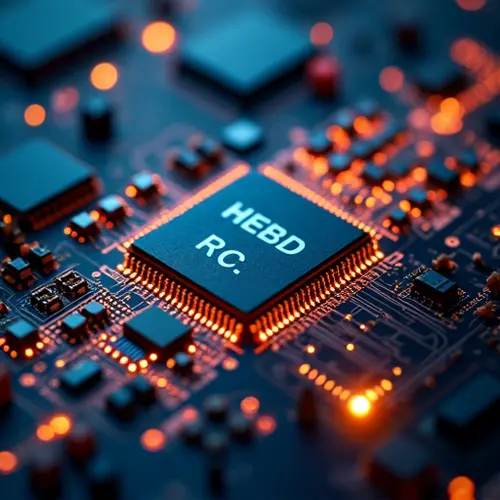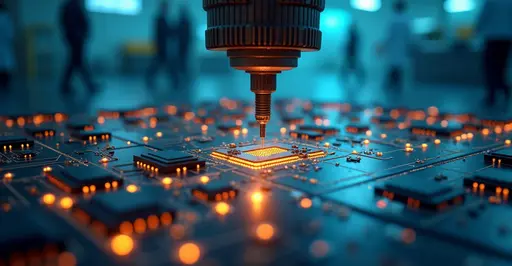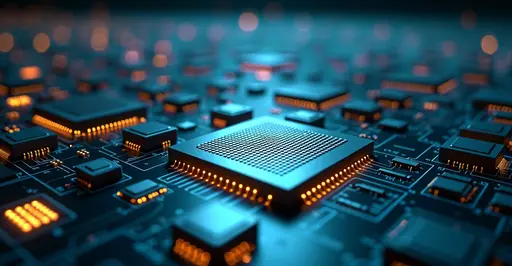US semiconductor manufacturing is booming with $630B+ in investments across 28 states, driven by CHIPS Act tax credits and public-private partnerships creating 500,000+ jobs and reversing America's chip production decline.

Major Expansion in US Semiconductor Manufacturing
The United States is witnessing an unprecedented surge in semiconductor manufacturing investment, driven by the CHIPS Act's comprehensive incentive program. With over $630 billion in announced private investments across 130 projects in 28 states since 2020, the nation is rapidly rebuilding its chip manufacturing capacity that had declined to just 10% of global production in 2022.
Tax Credits Fueling Fab Construction
The cornerstone of this resurgence is the Advanced Manufacturing Investment Credit (AMIC), which provides a 25% tax credit for semiconductor manufacturing facilities, increasing to 35% for properties placed in service after December 31, 2025. 'This tax credit has been absolutely essential for making U.S. semiconductor manufacturing economically viable,' says Dr. Sarah Chen, semiconductor policy analyst at the Information Technology and Innovation Foundation. 'Without these incentives, building fabs in the U.S. would remain 30-50% more expensive than in Asian competitors.'
The Department of Commerce has awarded $32.54 billion in grants and up to $5.85 billion in loans to 32 companies across 48 projects. Notable investments include Analog Devices' $105 million expansion across three locations, Bosch's $225 million Silicon Carbide manufacturing facility, and Micron's $275 million DRAM modernization project.
Public-Private Partnerships Driving Innovation
The program's success hinges on sophisticated public-private partnerships that combine government funding with private sector expertise. 'We're seeing an unprecedented level of collaboration between government agencies and semiconductor companies,' notes Michael Rodriguez, director of the National Semiconductor Initiative. 'The government is providing the financial backbone while companies bring the technical know-how and market connections.'
Recent developments include the U.S. government converting semiconductor grants into a 10% equity stake in Intel and a tentative joint venture between Intel and TSMC to bolster domestic chip production. These structural moves are part of a broader strategy to secure supply chains and align corporate activities with national security priorities.
Workforce Development and Economic Impact
The semiconductor resurgence is expected to create and support over 500,000 American jobs, including 69,000 facility jobs in the semiconductor ecosystem, 122,000 construction jobs, and over 335,000 additional jobs throughout the economy. Workforce development programs, particularly through partnerships with educational institutions like Arizona State University, have already trained over 10,000 participants across North America.
'The economic ripple effects are substantial,' explains Maria Gonzalez, economic development specialist. 'Every direct semiconductor job creates approximately 5.7 additional jobs in the broader economy. We're seeing communities transformed by these investments.'
Future Outlook and Challenges
While the program shows remarkable success, challenges remain. The investment tax credit is set to expire on December 31, 2026, creating uncertainty for long-term planning. Industry advocates are pushing for extension through at least 2029 and expansion to include semiconductor design through the proposed STAR Act.
The BASIC Act would further increase the credit from 25% to 35% to maintain U.S. competitiveness. 'We need to think beyond just manufacturing facilities,' argues Dr. Chen. 'Design costs for leading-edge chips have reached $725 million. We need comprehensive support across the entire semiconductor value chain.'
With projections indicating the U.S. could reach 28% of global advanced logic chip capacity by 2032, the semiconductor incentive program represents one of the most successful industrial policy initiatives in recent American history.

 Nederlands
Nederlands
 English
English
 Deutsch
Deutsch
 Français
Français
 Español
Español
 Português
Português









